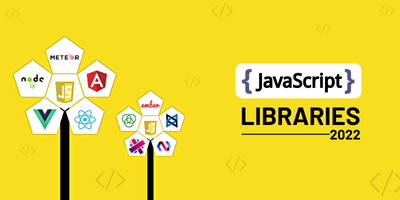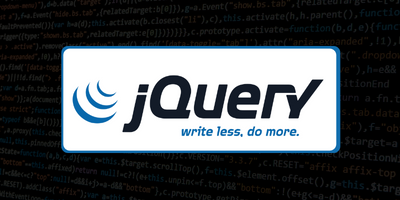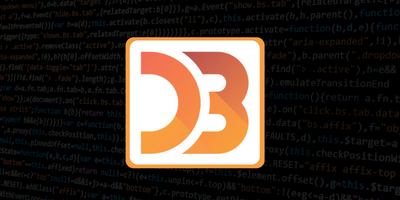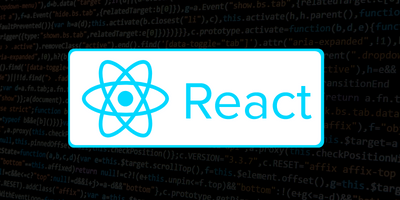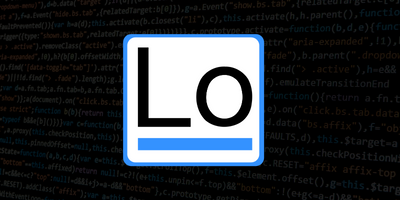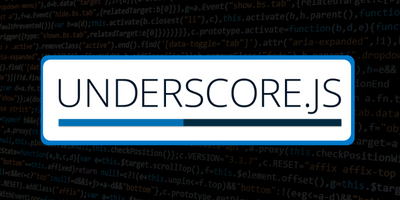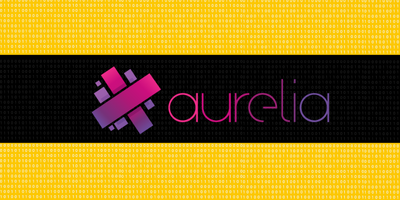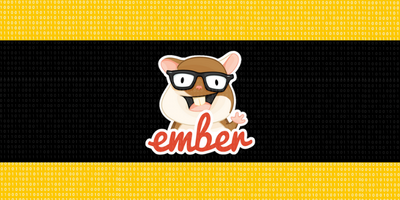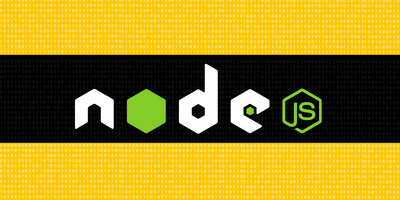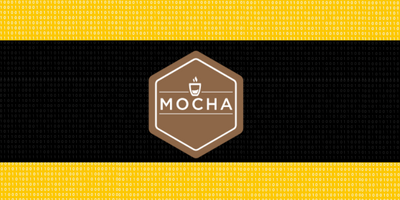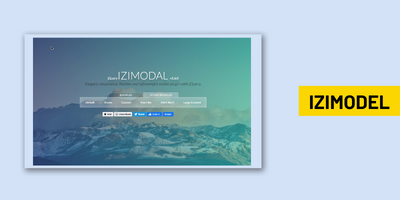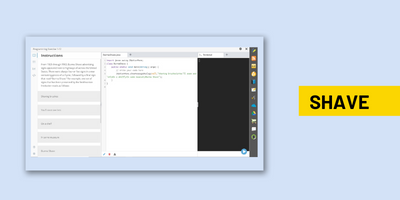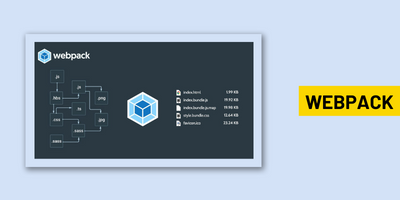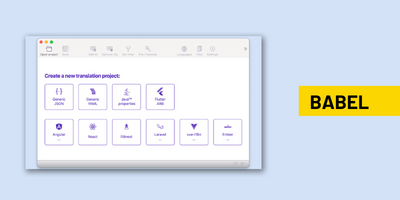JavaScript Libraries You Should Try Out in 2022
Fawzan Hussain
30 May 2022
•
7 min read
Introduction
JavaScript libraries have been changing the way we write JavaScript and have helped us in accomplishing our goals easily without the hassle of reinventing the wheel over and over again. That’s why JavaScript libraries are one of the first things that any developer should be aware of when starting out in this industry. Every year, new libraries are developed, old ones are abandoned, and all existing ones need to be updated with the latest advancements made by developers around the world.
But what’s so special about these libraries that they deserve special attention? These libraries promise to make coding faster, easier, and overall more enjoyable. I recommend taking some time out in 2022 to take them for a spin!
Here’s a list of the ones you should try out in 2022 if you haven’t already started to work with them. They may not be the most popular right now, but I predict they will be in three years!
Introduction to JavaScript Libraries 2022
JavaScript is an ever-changing language, meaning that new JS libraries are constantly emerging, and new approaches to JavaScript coding are also being developed. In order to maintain relevance within your industry, it’s important to keep up with these developments. This post will introduce you to a few latest version libraries that you should familiarize yourself with if you want to keep up with future developments within JavaScript.
Top JavaScript Libraries in 2022
1. jQuery
The jQuery library is a free software library that simplifies HTML document traversing, event handling, animating, and Ajax interactions for rapid web development. It was released on June 11, 2006, at BarCamp NYC by John Resig. According to JavaScript analytics service Libscore, jQuery is used on more than 60% of all websites whose front-end code can be evaluated.
Characteristics
- Fast, small, and feature-rich library
- It makes things like HTML document traversal and manipulation, event handling, animation, and Ajax much simpler with an easy-to-use API that works across a multitude of browsers.
Application
- Best used for creating beautiful animations
- It is used for both client-side and server-side scripting.
- Manipulate HTML documents and develop web applications
2. D3.js
D3.js is a JavaScript library for manipulating documents based on data. D3 helps you bring data to life using HTML, CSS, and SVG. D3’s emphasis on web page standards gives you the full capabilities of modern browsers without tying yourself to a proprietary framework, combining powerful visualization components and a data-driven approach to DOM manipulation.
Characteristics
- Supports HTML, CSS, and SVG
- Manipulate the DOM by using a Data-driven approach
- D3.js is a powerful JavaScript library that allows you to create data visualizations using web standards
Applications
- Allows you to bind arbitrary data to a Document Object Model (DOM)
- Helps to create animated transitions
- D3.js is a powerful JavaScript library that allows for high-level data visualization.
3. React.js
In simple terms, React.js is a JavaScript library for building user interfaces. These are interactive web applications that run on various devices with access to data from back-end servers. The first version of React was released by Facebook in 2011. The technology was developed by Jordan Walke and his team at Facebook’s Instagram subsidiary (which has since been separated into its own company).
Characteristics
- React.js is a library for building interactive user interfaces
- It's composed of reusable UI components that make it easy to create complex and responsive user interfaces without sacrificing performance or SEO.
- It makes use of JavaScript’s ability to manipulate DOM elements and CSS to allow more expressive content presentation.
Applications
- This is a lightweight JavaScript library that offers a number of additional, convenient features to developers.
- It may not be as comprehensive as other libraries, but it makes up for it with better performance and ease of use.
4. Lodash
JavaScript is one of the most widely used programming languages for web design. It has many interesting libraries, but Lodash is among my personal favorites because it’s easy to learn and use, super flexible, and this is a utility library that provides methods and functions on top of JavaScript's native objects to developers.
Characteristics
- It is a modern JavaScript utility library delivering modularity, performance & extras.
- It is a JavaScript utility library delivering consistency, modularity, performance & extras.
- All Lodash methods are chainable and iteratee-first for cleaner code and better readability.
Applications
- With Lodash, you can format the date and convert it to a string.
- It is a feature-rich library that provides methods for functional programming and helps you write cleaner code by minimizing the verbosity of everyday tasks.
- Lodash comes with all sorts of goodies to help make working with arrays, objects, strings, numbers, etc., easier and more fun.
5. Underscore.js
Underscore.js is a library that helps you get more out of your JavaScript applications. It’s most commonly used as a utility library, providing lots of functional programming helpers without extending any built-in objects. While developers often use Underscore simply as a utility belt for everyday scripting tasks, it has become very popular with front-end developers, due to its role in Backbone.js and other MVC frameworks.
Characteristics
- It is a utility-belt library for JavaScript that provides a lot of functional programming support.
- It’s small (about 8kb minified and gzipped), and it doesn’t take much to start using it.
- It’s ideal for writing concise code to perform multiple operations on arrays and objects.
Applications
- It is a library for JavaScript that provides a whole mess of useful functional programming helpers without extending any built-in objects.
- It’s a dependency of Backbone.js but is also very useful on its own.
- Underscore.js is a JavaScript library that provides a variety of functional programming helpers without extending any built-in objects, just like Prototype.js and other competitors.
Some Useful JavaScript Frameworks That You Must be Known
1. Aurelia
Aurelia is a powerful open-source JavaScript client-side framework that features advanced tooling and state-of-the-art UI components. It offers data binding, templating, MVVM, and more. Aurelia is compatible with multiple browsers and operating systems.
2. Ember.js
If you want to create a powerful web application, then you should definitely check out Ember cli. It offers a smooth user experience and has great documentation. The framework is written in JavaScript and HTML5, making it easy for developers to understand. This also makes it easier for them to learn how to use it quickly and effectively.
3. Node.js
Node.js, or Node, is an open-source and cross-platform JavaScript run-time environment for developing server-side web applications. Node runs on Chrome’s V8 JavaScript engine. Because of its event-driven architecture, non-blocking I/O model, and lightweight design, it is often used for real-time applications that are data-intensive and require a large number of concurrent connections.
4. Mocha
Mocha is a test framework for Node.js and browsers, making asynchronous unit testing painless. It's easy to write tests with mocha because it handles all of that annoying setup code you don't want to write.
Best JavaScript Tools
1. iziModal
iziModal is a lightweight and modular JavaScript library that allows you to create smooth and responsive modal dialogs. It works with any CSS framework, such as Bootstrap or Foundation. It is a modal component built with Vue.js, and it aims to provide an easy way to add a beautiful and flexible modal window to your application.
It’s lightweight (2kb gzipped), simple to use, customizable, and has no dependencies. iziModal can be used anywhere you need a modal window: from websites to mobile applications or even desktop applications.
2. Shave
The shave is one of the most useful tools in JavaScript. It allows you to use CSS selectors to get elements from your HTML and manipulate them with JavaScript, just like jQuery, but without the jQuery dependency. This makes it ideal for projects that don’t need all of jQuery’s features.
3. Webpack
Webpack is a module bundler that simplifies web development by handling asset management and builds. Webpack works with any type of library or framework. It can bundle CSS, LESS, SASS, CoffeeScript, TypeScript, and more. It also has plugins for other languages like Java, C++, PHP, etc.
4. Babel
Babel is a JavaScript compiler that helps you to use new features introduced by ECMAScript. It allows developers to write code using newer versions of JavaScript and then transpile it into backward-compatible code that can run on older versions of browsers.
Conclusion
For JavaScript developers looking to increase their repertoire of skills, it’s not always easy to choose which new technologies and practices you should keep an eye on. With an ever-growing number of new frameworks emerging all of the time, developers can find themselves lost in a sea of unfamiliar tools. Javascript libraries help you build great web and desktop applications, but it can be hard to choose the right one to get started with.
There are thousands of articles online that try to predict what will be relevant in five years’ time—but these lists are rarely based on any criteria, and usually just include things that their authors think will be popular.
I hope you've enjoyed reading my tutorial, and I wish you much success as you learn JavaScript libraries. If you liked it, please share it on social media! In addition, sign up for our newsletter to get the latest news about our articles.
Fawzan Hussain
An SEO consultant and the CEO of Seooptimizekeywords.com. With over a decade of experience in the industry, I'm passionate about helping businesses achieve their online marketing goals through effective SEO strategies.
See other articles by Fawzan
WorksHub
Jobs
Locations
Articles
Ground Floor, Verse Building, 18 Brunswick Place, London, N1 6DZ
108 E 16th Street, New York, NY 10003
Subscribe to our newsletter
Join over 111,000 others and get access to exclusive content, job opportunities and more!
